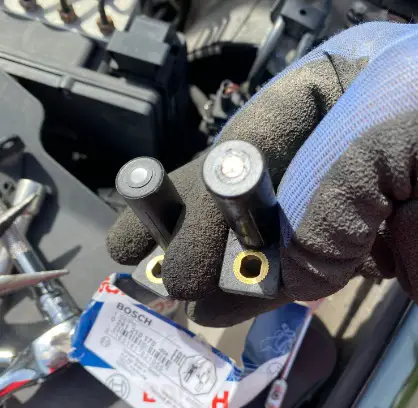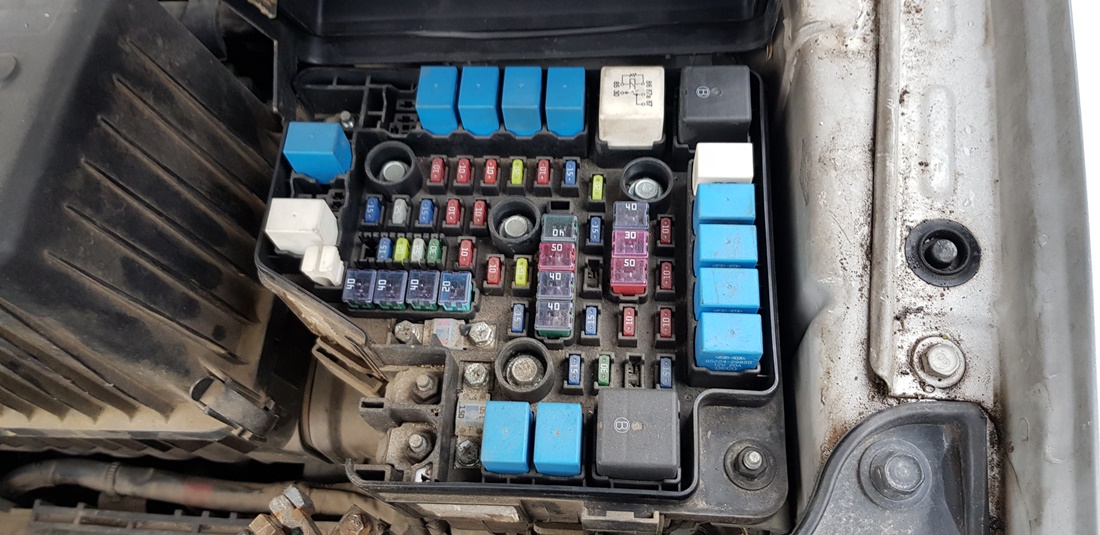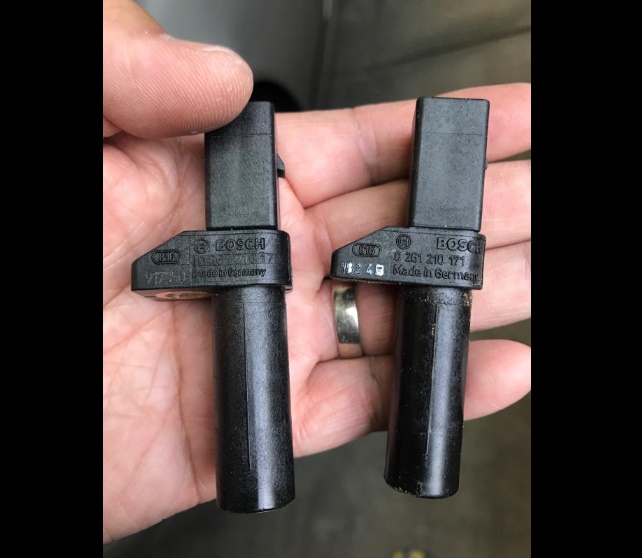Do you ever have trouble seeing out of your windshield when it rains? This can be a major safety hazard, especially if you are driving in traffic.
In this blog post, we will discuss some tips that will help you remove the haze and improve your visibility while driving.
- Key Takeaway
- How Does Glass Polish Work On Windshields?
- How To Deal With Haze On Windshield That Appears When It Rains
- Why Is My Windshield Hazy When It Rains?
- Why Windshield Wipers Leave Haze
- FAQs
- Q: What causes haze on windshield when it rains?
- Q: How can I prevent haze on my windshield during rain?
- Q: Can I use water and soap to clean the haze on my windshield?
- Q: Is it safe to drive with haze on the windshield?
- Q: How often should I clean my windshield to prevent haze?
- Q: Can I use vinegar to clean the haze on my windshield?
- Q: Are there any commercial products available to remove haze from windshield?
- Q: Can I prevent haze on my windshield by using windshield wipers?
- Q: How can I maintain a haze-free windshield?
- Q: Is it necessary to replace the windshield if it is heavily hazy?
- In Conclusion
Key Takeaway
- To deal with haze on the windshield that appears when it rains, you need to polish your windshield. Start off by washing the windshield with water and removing any dirt and debris. Then, apply glass polish on an applicator pad, apply it to the whole windshield, and let it dry for a few hours. Then, wipe the windshield with a clean microfiber towel.
- Windshield wipers can leave a haze due to dirt being spread by the wipers, exposure to wide temperature variations, and buildup of grime on the windshield.
How Does Glass Polish Work On Windshields?

Glass polish is a liquid that is applied to the windshield with a rag. The glass polish contains abrasives that help to remove scratches and other imperfections from the glass.
One of the most important benefits of glass polish is that it creates a protective layer. This layer helps to protect the glass from scratches, scuffs, and other damage.
The protective layer also makes it easier to clean the glass, as it repels dirt and grime. Glass polish is an essential product for anyone who wants to keep their glass looking new.
Glass polish is available in a variety of formulas, each designed for a specific type of glass. There are polishes for windshields, windows, shower doors, and more. No matter what type of glass you have, there is a polish that can help to keep it looking its best.
How To Deal With Haze On Windshield That Appears When It Rains

- Clean the windshield with water.
- Apply glass polish to the windshield using a pad.
- Let the abrasive dry.
- Wipe the windshield down with a clean microfiber towel.
When it rains, the haze on your windshield can be a huge distraction. It can be hard to see out of your windshield when it’s covered in this film, and it can make driving dangerous. So, here is how to deal with haze on the windshield that appears when it rains:
1. Required tools for the job
- Glass polish (see on amazon.com)
- Microfiber towel
- Detailing pad (see amazon.com)
2. Why glass polish and not glass cleaner
No sort of watery clear glass cleaner that I’ve seen can remove the haze on windshields. What you need is glass polish. The difference between a glass polish and a glass cleaner is that the glass cleaner usually contains some form of water-miscible solvents and some detergents.
It has a good degreasing effect which in combination with a microfiber towel, will clean the windows just fine. However, the haze that appears when it rains is a much bigger problem.
The glass polish on the other hand will have a much stronger solvent so you will get an even more degreasing effect. You’ll also get the scrub from the abrasive which is going to tear through the layer of haze.
The haze on windshields is actually formed from soaps in the first place. When you wash your vehicle with soap, you add some water and soap mixture as a windshield liquid. Over time, the soaps bake in the sun and actually bond to the glass. The only way you can remove them is by glass polish.
You don’t need to use a glass polish each time you wash your vehicle. A single glass polish can last up to a year. It is also a little bit messier than using a normal glass cleaner and the residue that it leaves is thick. That is why it’s important to get it off.
3. Clean the windshield with water only

Before we start with the polishing, the windshield needs to be clean and debris-free. Grab a hose or a bucket of water and clean the windshield of dirt and debris.
Make sure that there are no tiny rocks or anything that might scratch the windshield while you polish it. No need to add any fancy cleaning solutions, water will do just fine.
4. Apply the glass polish onto the windshield

The detailing pad is a bit sturdy and that will help you really work in the polish. Shake the glass polish bottle really well and then apply about three dots on the detailing pad.
Pick an area of the windshield that you want to work on. It is best to divide the windshield into four large sectors and then work them sector by sector. First, tap the windshield with the detailing pad so you can equally distribute the glass polish.
Then, polish the windshield by doing small circles. It is going to be an exhausting process because it is really hard to get those murky spots that cause the haze.
5. Let the abrasive dry
Once you are done with all four sectors of the windshield, let the abrasive dry for about ten minutes. Similar to car wax, the glass polish will create a protective layer above the windshield and will keep it from forming haze while raining.
6. Wipe the windshield with a clean microfiber towel

Once the glass polish sat for about ten minutes on the windshield, grab a clean microfiber towel and start by wiping the edges first. Then, with circular motions, wipe away the abrasive. It is pretty easy to remove the glass polish. You can immediately see the results.
To test if haze will form again when it rains, you can spray the windshield with some water and observe. But, if you really worked the glass polish onto the windshield, there will be no haze for sure.
Why Is My Windshield Hazy When It Rains?
When it rains, the air is filled with moisture. This moisture condenses on your windshield, and as it evaporates, it leaves behind a film of water. Because the rain isn’t always ”clean water” it does leave marks on the windshield when dried up. This film of water can cause your windshield to appear hazy.
However, it’s not just the outside factors that make a windshield hazy. Cigarette smoke, dirty cabin air filters, and finger marks all contribute to making the windshield hazy when it rains.
When it is sunny, you simply do not see those impurities. But, when it starts to rain and the windshield kind of fogs up, you can really see those murky spots all over your windshield.
Another thing to consider is that the inside of the vehicle is made out of plastic and vinyl. Both plastic and vinyl off-gas, especially when they are sitting all day in direct sun. The off-gassing creates a haze not just on the windshield, but on all of the glasses.
There are a few things you can do to help prevent this from happening. First, make sure that your windshield is clean before the rain starts. Second, during rainy weather, keep your windshield wipers on and ensure that they are in good working condition.
Finally, if you notice your windshield starting to haze up, turn on your defroster to help clear the moisture.
Why Windshield Wipers Leave Haze

One of the most frustrating things that can happen while driving is when your windshield wipers leave a haze on your windshield. This can make it difficult to see, and even more frustrating, it can be hard to get rid of. There are a few reasons why this happens, and luckily, there are a few ways to fix it.
One reason why your windshield wipers might leave a haze is that the blades are old and worn out. When the blades get old, they can start to deteriorate and split. This will cause them to leave streaks on your windshield instead of cleaning it properly. If you think this might be the case, try replacing your windshield wipers.
Another reason why your windshield wipers might be leaving a haze is that they’re not the right size for your windshield. If the blades are too big or too small, they might not make full contact with your windshield, which will leave streaks and smears. To fix this, you’ll need to find the right size wipers for your windshield.
If neither of those solutions works, it’s possible that there’s something wrong with your windshield itself. It could be that it’s dirty or has a film on it that’s preventing the wipers from making proper contact says Subary Forum.
FAQs
Q: What causes haze on windshield when it rains?
A: The haze on the windshield when it rains is typically caused by the combination of rainwater and dirt or debris on the windshield.
Q: How can I prevent haze on my windshield during rain?
A: To prevent haze on your windshield during rain, make sure your windshield is clean and free from any dirt, dust, or debris. You can also apply a rain repellent or windshield treatment to improve visibility.
Q: Can I use water and soap to clean the haze on my windshield?
A: Yes, you can use water and soap to clean the haze on your windshield. Make sure to use a mild soap and a soft cloth or sponge to avoid scratching the glass.
Q: Is it safe to drive with haze on the windshield?
A: Driving with haze on the windshield can reduce visibility and increase the risk of accidents. It is best to address the issue and clean the windshield as soon as possible.
Q: How often should I clean my windshield to prevent haze?
A: It is recommended to clean your windshield at least once a week to prevent the build-up of dirt and debris that can cause haze during rain.
Q: Can I use vinegar to clean the haze on my windshield?
A: Yes, you can use a vinegar and water solution to clean the haze on your windshield. Mix equal parts of vinegar and water, apply it to the glass, and wipe it off with a clean cloth or sponge.
Q: Are there any commercial products available to remove haze from windshield?
A: Yes, there are various commercial products available specifically designed to remove haze from windshields. These products usually come in the form of sprays or wipes.
Q: Can I prevent haze on my windshield by using windshield wipers?
A: Windshield wipers can help improve visibility during rain, but they may not completely prevent haze on the windshield. It is still important to keep the windshield clean and free from debris.
Q: How can I maintain a haze-free windshield?
A: To maintain a haze-free windshield, regularly clean the glass with a mild detergent or vinegar solution, and keep the wiper blades clean and in good condition.
Q: Is it necessary to replace the windshield if it is heavily hazy?
A: In most cases, heavily hazy windshields can be cleaned and restored rather than replaced. However, if the haze is due to damage or scratches on the glass, windshield replacement may be necessary.
In Conclusion
Rainy days can be inconvenient when it comes to driving, but they don’t have to be a hassle. When you experience haze on your windshield due to the rain, there are several solutions that you can take.
The most important thing is to keep up with regular maintenance, such as using a high-quality automotive glass cleaner and waxing your car regularly.
Doing this can help prevent any buildup of dirt or dust that could be causing the haze.




